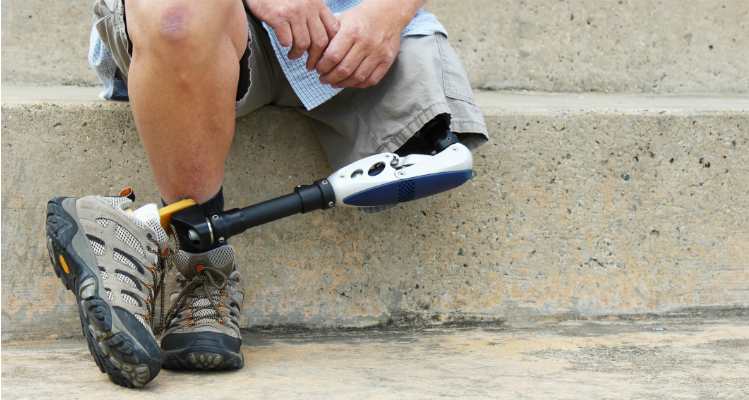Above-knee prosthetic legs represent a significant advancement in medical technology, offering amputees a chance to regain mobility and improve their quality of life. These prosthetics are complex devices, comprising various features and components that are crucial for mimicking the natural function of a human leg. This article delves into the design, functionality, and customization of above-knee prosthetics, exploring how each component contributes to the overall effectiveness of the prosthetic.
Key Components of Above-Knee Prosthetics
Understanding the anatomy of an above-knee prosthetic leg is essential to appreciate how these devices restore functionality for amputees. Each component is designed with a specific purpose, working together to provide mobility and comfort.
Prosthetic Socket
- Function: The socket is the part of the prosthetic that interfaces directly with the user’s residual limb. It must be precisely fitted to ensure comfort and proper weight distribution.
- Material: Typically made from durable materials like carbon fiber or acrylic resin, the socket is custom-molded to fit the exact contours of the residual limb, preventing discomfort and skin irritation.
Knee Joint
- Mechanics: The knee joint is pivotal in providing a natural gait, allowing the prosthetic to bend and straighten in a controlled manner.
- Types: There are various types of prosthetic knees, each with different mechanisms, such as mechanical, pneumatic, hydraulic, or microprocessor-controlled, catering to different levels of activity.
Prosthetic Foot
- Design: The foot component is crucial for stability and varies widely based on the activity level of the user. It can be flexible and dynamic or more rigid, depending on the required support.
- Material: Made from materials such as rubber, plastic, or carbon fiber, prosthetic feet are designed to absorb shock and mimic the action of a natural foot.
Advanced Features Enhancing Functionality
The functionality of above-knee prosthetics has significantly advanced with the integration of modern technology, enhancing the user’s experience and capabilities.
Microprocessor-Controlled Knees
- Adaptability: Microprocessor knees use sensors to adapt the flexion and resistance of the knee to the walking speed and terrain, offering a smoother, safer walking experience.
- Customization: These knees can be programmed based on the user’s walking habits and lifestyles, such as adjustments for different activities like climbing stairs or walking on uneven surfaces.
Modular Components
- Interchangeability: Modular design allows for easy replacement or upgrading of components, such as switching out a foot for different types of activities.
- Adjustability: Adjustments can be made to the alignment and orientation of the leg, allowing for better posture and gait dynamics.
The Customization Process
Customization is key in prosthetic design, ensuring that each device fits the specific needs and lifestyle of its user.
Steps in the Customization Process
- Initial Consultation: Involves assessments by a prosthetist to determine the specific needs and goals of the user.
- Casting and Measurements: Taking precise measurements of the residual limb to create a custom socket.
- Fitting and Adjustments: The prosthetic is continually adjusted for comfort and functionality through trial fittings.
- Final Modifications: Once the user is comfortable, final modifications are made for optimal function.
The technology behind prosthetic legs, particularly for above-knee amputees, has evolved to provide not just basic mobility but also a quality of life that was once difficult to achieve. Companies like PrimeCare are at the forefront, developing prosthetic solutions that are highly personalized. For a deeper understanding of the parts and their functions, prosthetic leg parts provide a detailed breakdown, essential for anyone looking to understand or choose an above-knee prosthetic. This integration of advanced engineering and customization in prosthetics marks a significant step forward in medical technology, offering amputees unprecedented levels of mobility and independence.


